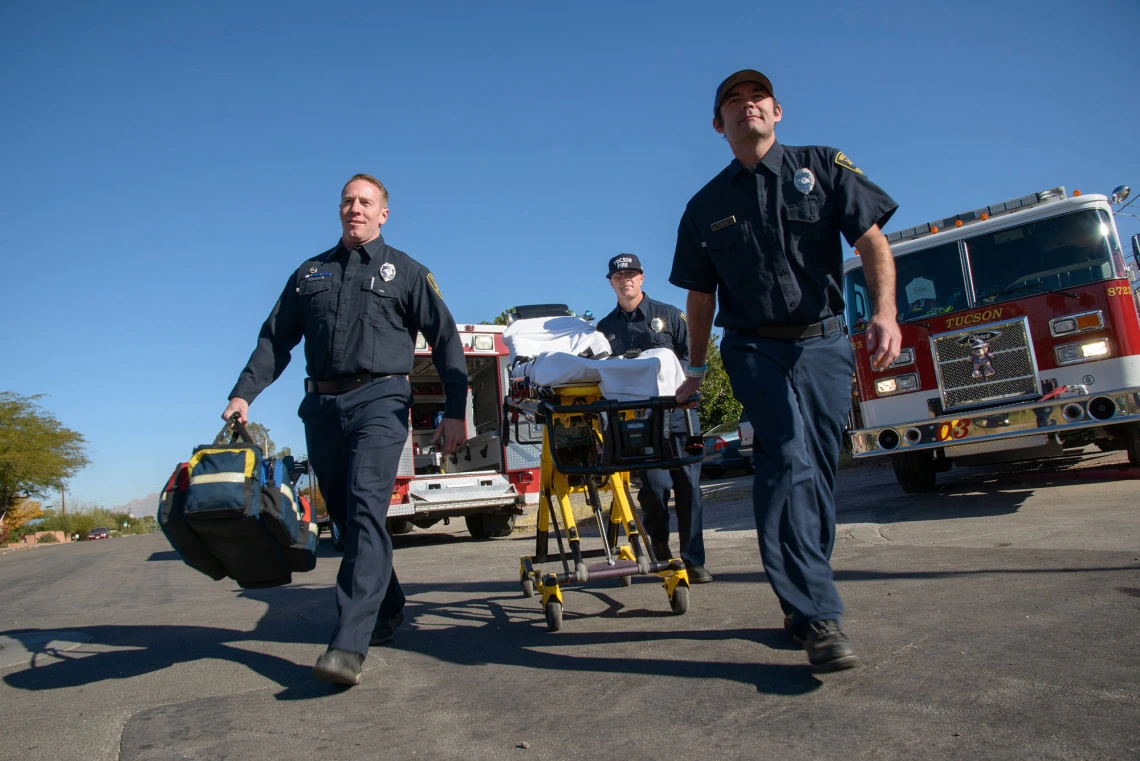Students Making ‘Remarkable Progress’ on Deadly Drug Detector

The F1 Drug Detector is intended to save the lives of first responders and others who encounter drugs like fentanyl.
University of Arizona students on Interdisciplinary Capstone Team 24064 are developing a drug detection device to save the lives of law enforcement, researchers and health inspectors who may encounter the powerful opioid.
Fentanyl is 50 times more potent than heroin, and overdose rates are increasing rapidly. The death toll in 2012 was 2,600 Americans; by 2018, the number jumped to over 30,000.
Fentanyl can be absorbed through the skin, meaning even accidental contact with the drug can prove fatal. To help save lives, project sponsor Lightsense Technologies is working to bring its F1 Drug Detector to market.
The device uses photoemission/reflection spectroscopy to detect drugs by illuminating them at specific wavelengths of ultraviolet light. By shining a light, the user will not need to make any contact with the potentially hazardous materials. The device is planned to function through clear plastic, reducing the risk of physical contact with the substances.
The capstone team is working to enhance the F1's optical sensing technology by using 3D printing to prototype new designs for the device to improve performance and manufacturability. If the prototypes are viable, Lightsense will allocate a budget to create an aluminum mold of the design for a potential gateway to production.
“What excited me the most about being involved in working on the F1 Drug Detector was the chance to apply my education in optical engineering to a meaningful cause,” said team leader Justin Offolter, an optical sciences and engineering major. “I have spent the last few years hearing more and more about the dangers of fentanyl and the risks it poses for both users and law enforcement and working on the Lightsense drug detector is a great way for me to contribute to mitigating these risks.”
Offolter worked as a summer intern at Lightsense Technology developing the F1 Drug Detector. When Lightsense Technology decided to sponsor a senior capstone project, Offolter was the logical choice to lead the capstone team.
“I was initially a little nervous about the capstone project and the possibility of needing to pick up a lot of slack, but my team members are all very competent and helpful,” said Offolter. “I have really enjoyed getting to work with them and know them better, and I look forward to seeing our project to completion.”
The F1 offers near-instant results with color-coded lights to indicate drug concentration levels. The rechargeable batteries also cut down on waste with virtually no operating cost.
The current F1 model has two channels, meaning it can detect two different drugs with the same device. The ultimate goal is for the device to detect up to four different drugs.
“What's particularly noteworthy is the uniqueness of the F1 Drug Detector technology; its technologies are not something the students can easily find references to in existing research due to it being a novel product,” said project advisor Ryan Luu with Lightsense Technologies.
Despite this challenge, Luu says the student team has already achieved remarkable progress on the device updates. He hopes the redesigned model will improve manufacturing time by over 90%.
"Collaborating with the UA student team has been truly rewarding,” Luu said. “Their professionalism, much to our pleasant surprise, coupled with the diverse skill sets they bring to the table, aligns perfectly with the interdisciplinary demands of our project."

